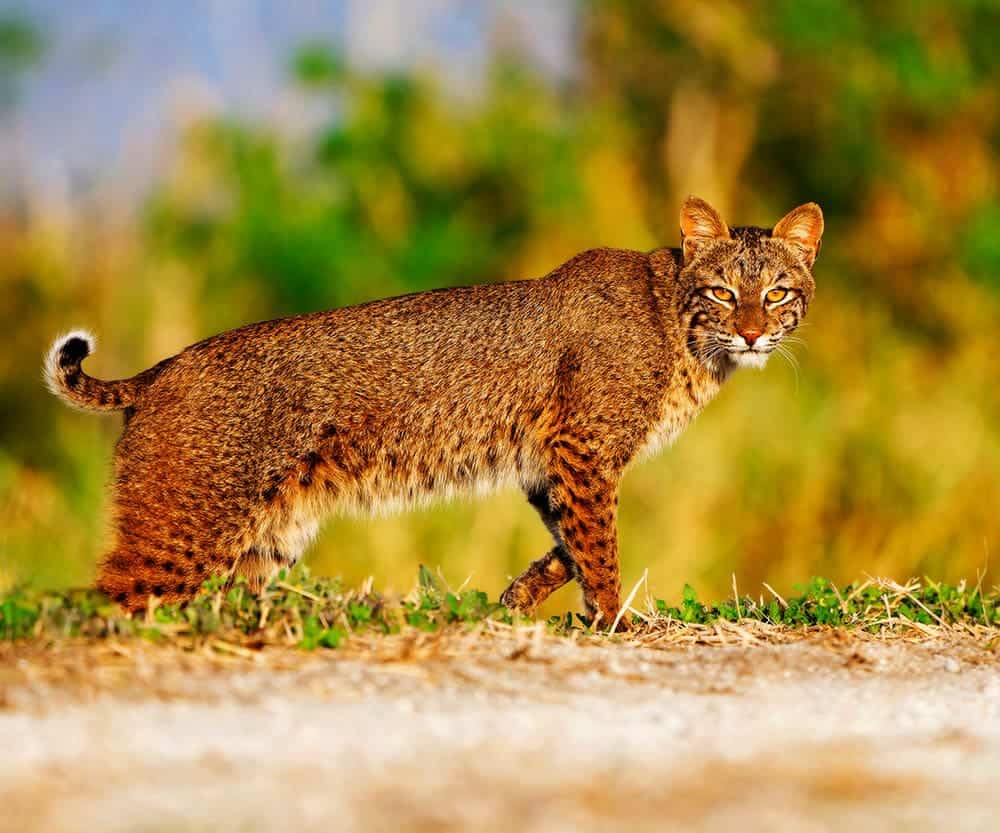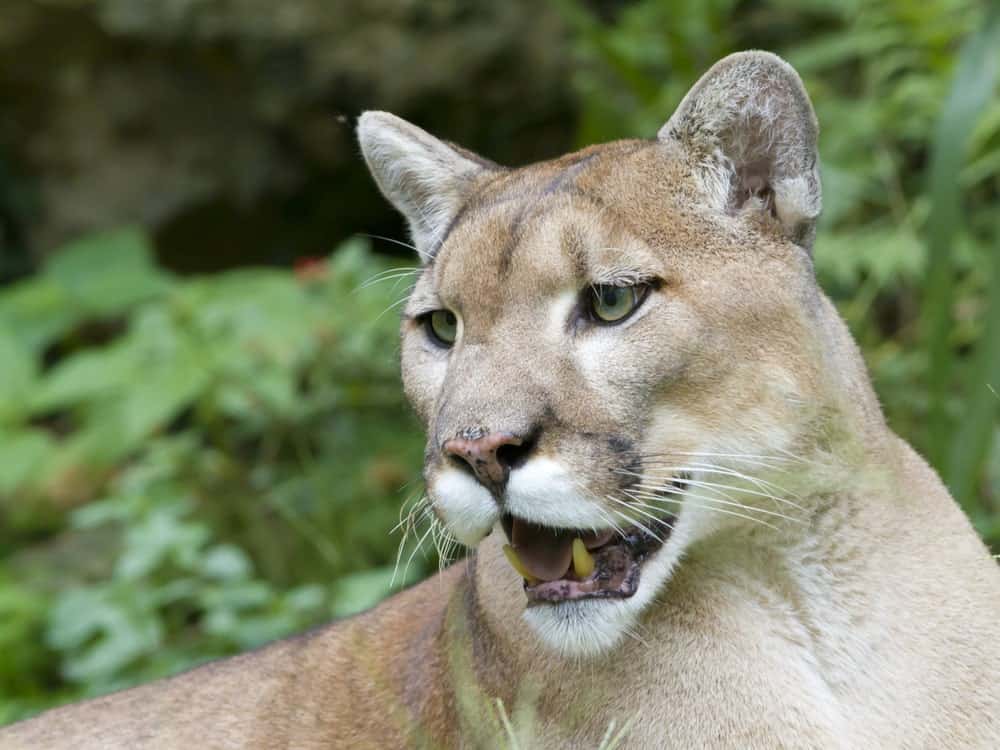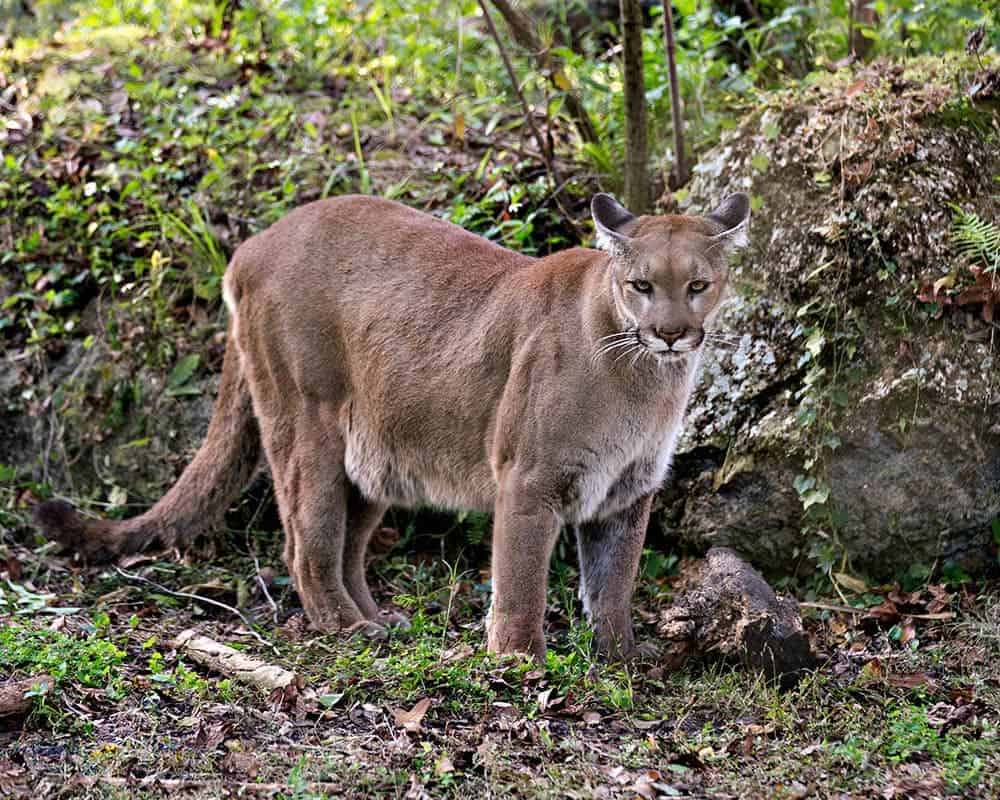Florida, also known as the Sunshine State, is home to an abundance of wildlife. On any given day, you can see bears, raccoons, otters, deer, foxes, lizards, birds, alligators, turtles, snakes, and even manatees, just to name a few.
Florida is also home to two species of wildcats—the panther and the bobcat—and their beauty is something to admire. In this article, we’ll discuss these two species and go over their unique characteristics. If you live in Florida, we hope this article helps you identify these two wildcats just in case you spot one.

The 2 Types of Wild Cats in Florida
1. The Florida Bobcat

The Florida bobcat, also known as a Florida lynx, is twice as big as domestic cats. They have bobbed tails, hence the name, and have white spots on the back of their short, pointed ears. Bobcats are generally tannish to reddish brown with brown or black spots. Younger bobcats have spotted fur with more distinctive facial markings. A bobcat’s body length averages between 2–4 feet long. Males are bigger than females, and the average weight is between 15–35 pounds.
In Florida, you can find bobcats in swamps, deep forests, and hammock land. Breeding occurs in the fall, winter, and spring with a gestation period of 50–60 days, and there are anywhere from one to four kittens in a litter. The bobcat’s average lifespan is 3–4 years in the wild. In captivity, one bobcat lived to 32 years old.
The Florida bobcat can be found in all 67 counties of Florida. The only place they have not been seen over the last several decades is the Florida Keys. Subsequently, Florida scientists believe the bobcat population in Florida is declining. On the other hand, wildlife officials in the state do not believe the bobcat population is at risk.
Fun Facts About the Bobcat
- Bobcats sleep 2–3 hours at a time and do most of their hunting at dusk, dawn, and throughout the night. Bobcats have keen hearing and excellent vision, which allows them to hunt easily during the nighttime.
- A few black bobcats have been spotted in Southern Florida.
- Mother bobcats teach their young how to hunt, but after 11 months, the young are booted out of the den.
- Bobcats have lightning speed; they can reach speeds up to 30 miles per hour.
- They are sprinters and only run for short distances. Their running gait is similar to a rabbit’s, which means they place the hind feet in the same place as the front feet as they run, giving them a “bob” type run.
- On occasion, they are misidentified as domestic house cats.
- Bobcats eat fairly small animals, such as rodents and birds, but have been known to hunt down deer.
- Bobcats are carnivores and like to cover up their kill, as they may not eat right away. They cover the kill with leaves, grass, and dirt in a process called “caching.”
- Fish only: this type of aquarium only houses fish, and possibly algae and detritivores organisms (such as shrimps and snails).
- Reef: this type of aquarium can house hard corals but they require special equipment. Invertebrates with special requirements (lighting, water mixing) can also be added.
- Mixed: this last type of saltwater aquarium can accommodate soft corals and fish.
2. The Florida Panther

The other wildcat species in Florida is, of course, the Florida panther. Black is usually the color that comes to mind when you think of panthers, but in Florida, they are not black at all but rather a tannish-brown color with white underbellies. Also known as the Florida puma or Florida cougar, the Florida panther averages between 5–7 feet long and can weigh between 60–160 pounds. The Florida panther’s tail is equally as long as its body but with a distinctive feature: the tail is crocked with a distinctive patch of fur on the back.
In Florida, you can find them in wetlands, forests, and grasslands, mainly south of Orlando and the southwestern tip of Florida, but males have been spotted as far north as Georgia. Breeding can occur throughout the year but mainly occurs from December to March. Litters usually contain only two to three young. In the wild, the Florida panther can live between 8–15 years. They prey on white-tailed deer and hogs but occasionally feed on birds, rabbits, raccoons, armadillos, and even alligators. They are also most active at dusk and dawn.
The Florida panther’s population is dwindling. Only 120–230 exist today, and they were one of the first species added to the endangered species list in 1967. Wildlife conservationists believe their major threat is habitat loss due to human construction, fragmentation, and road kills.
Fun Facts About the Florida Panther
- They don’t roar. Instead, they hiss, purr, growl, snarl, or yowl.
- Florida residents are fans, and they pay extra for specialized and premium Florida “Protect the Panther” license plates, where all proceeds go to panther research.
- They can reach speeds up to 35 miles per hour in as few as 100 yards. They like to get as close as possible to their prey, to which they spring forward to capture their kill.
- Florida panthers hide from humans.
- Kittens stay with the mother for 2 years. It’s also rare that all kittens survive in a litter.
- They are a subspecies of the mountain lion and are the only subspecies of the mountain lion in the Eastern United States.

Conclusion
The Florida bobcat and the Florida Panther are elegant in their gaits and remarkable hunters. Suppose you’re interested in joining the effort to protect these extraordinary creatures, especially the endangered Florida panther. In that case, you can contact the Nature Conservancy to find ways you can help, either by a monetary donation or volunteering your time at events.
See also:
- Maine Coon Kittens For Sale in Florida: Breeders List
- Persian Kittens For Sale in Florida: Breeders List
Featured Image: Rejean Aline Bedard, Shutterstock
